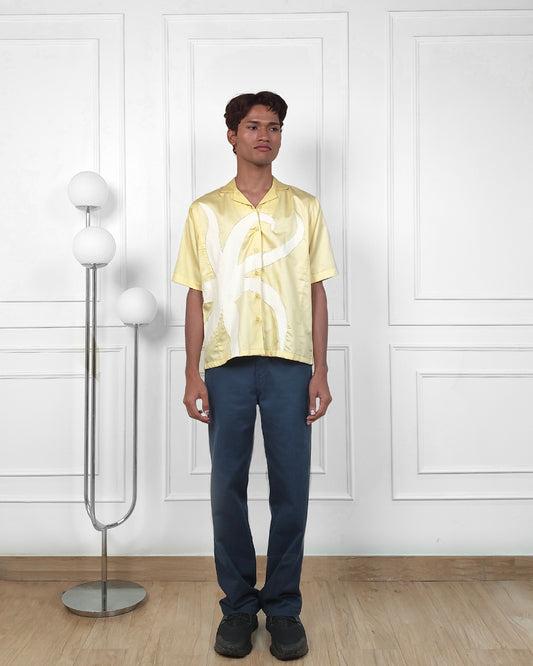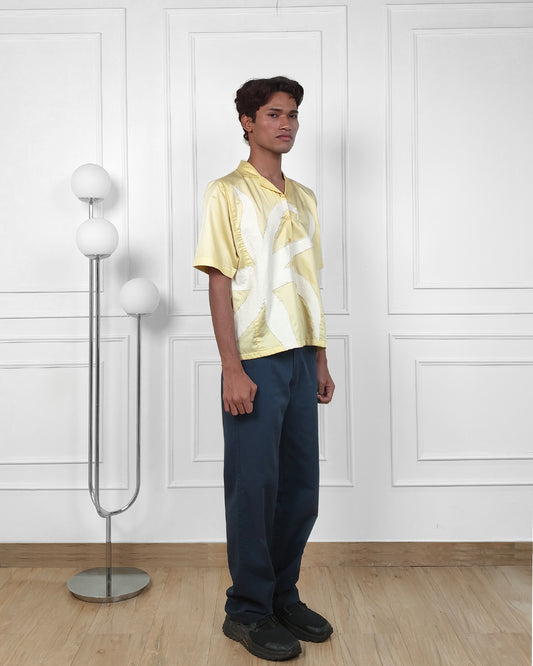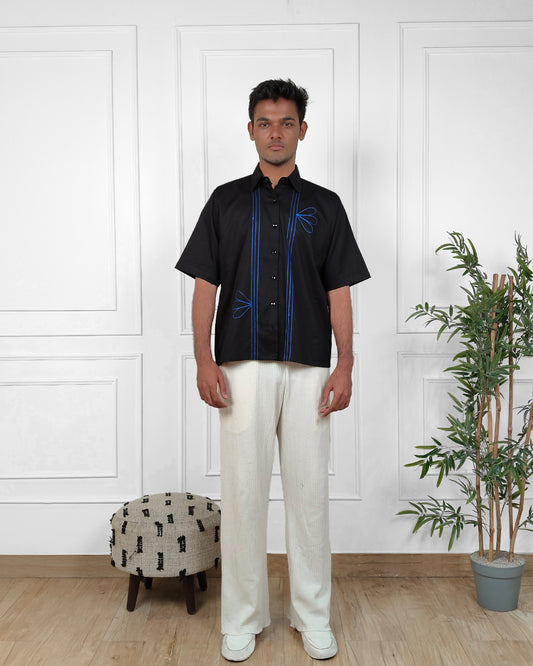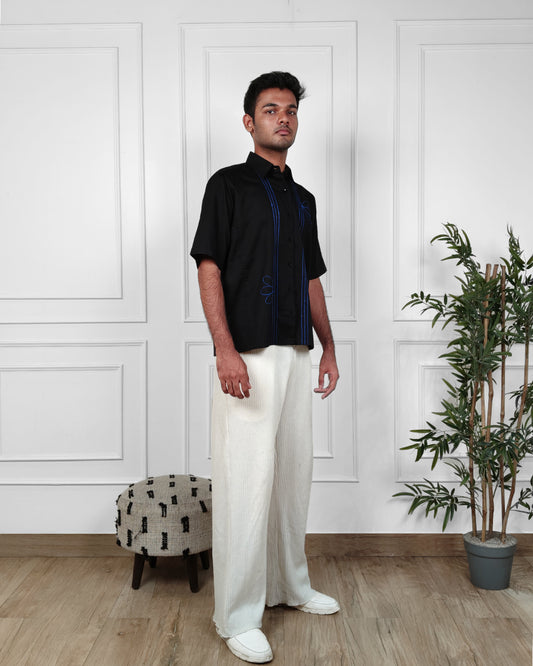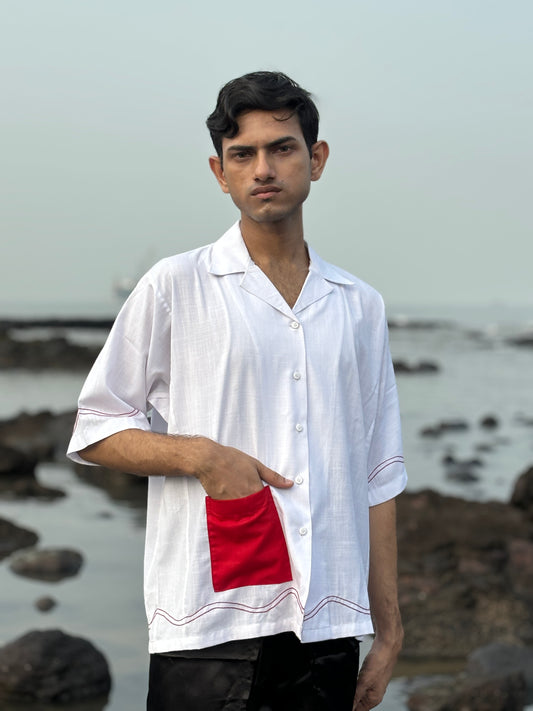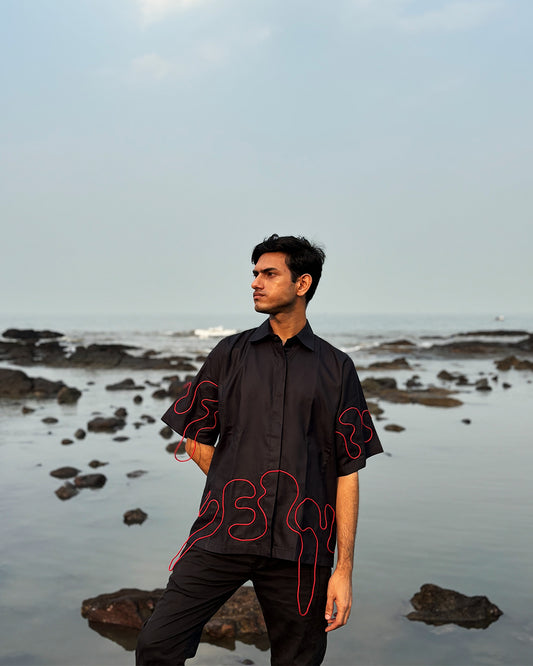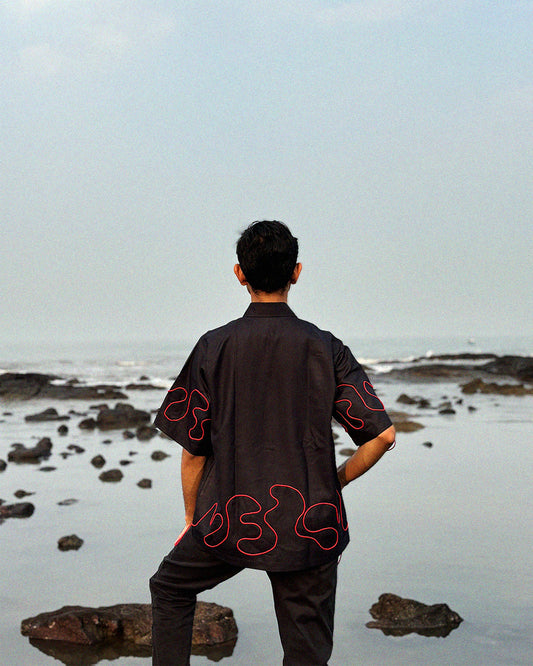
7 Zero Waste Embroideries and Weaving Techniques: A Global Exploration
In a world increasingly focused on sustainability, zero waste practices are gaining momentum in various forms of art and craft. One such area is traditional textile arts, specifically embroidery and weaving. These techniques have been practiced for centuries across cultures, but with a modern twist, they are being adopted as part of the zero waste movement. From Indian Kasuti and Paithani to intricate Suzhou embroidery, these ancient methods of decoration and storytelling not only conserve materials but also offer an ethical alternative to mass-produced textiles.
This blog will explore various traditional embroidery and weaving techniques from around the world that follow zero waste principles. We will also delve into the history, cultural significance, and sustainability benefits of these practices.
What is Zero Waste Embroidery and Weaving?
Zero waste embroidery and weaving are part of a broader sustainable fashion and crafting movement that aims to reduce textile waste, repurpose materials, and utilize every scrap of fabric or thread. This includes techniques where the craftspeople use upcycled textiles, natural materials, and sometimes even excess thread and fabric from previous projects. These sustainable techniques not only promote ethical fashion but also preserve ancient craft traditions that have been practiced for generations.
Zero Waste and Sustainability in Traditional Embroidery
Embroidery is one of the most resource-efficient art forms. When done with intention, it can be zero waste by utilizing leftover scraps, upcycling old garments, and using eco-friendly materials. Many traditional cultures had a natural, sustainable approach to crafting, with little to no waste generated during the creation of their textiles. Here are some examples of ancient embroidery techniques that align with zero waste practices.
1. Kasuti Embroidery (India)
Kasuti is a form of hand embroidery from Karnataka, India, known for its intricate geometric patterns. Historically, Kasuti was used to embellish clothes for women and even for temple decorations. The art form involves the careful use of cotton thread and is known for its simplicity and elegance. It is considered a zero waste technique due to the fact that it looks identical on both sides (the front and back) so there is essentially no wastage.
- Materials: Cotton threads, often in muted colors, are stitched onto cotton or silk fabric. The use of local, natural materials ensures no synthetic waste.
- Technique: The embroidery uses several stitch types, including the cross stitch, running stitch, and double running stitch. Each of these techniques is designed to use minimal fabric and thread, reducing waste.
- Cultural Significance: Kasuti embroidery represents the traditions of Karnataka, a region with a rich history of textiles. It is often passed down through generations, with no waste generated as the stitching covers large swaths of fabric.
- Zero Waste Aspect: Kasuti's simplicity and reliance on cotton thread, which is often sourced from local crops, minimizes environmental impact. Old garments can be repurposed for this technique, aligning with zero waste principles.
When Did Kasuti Start? Kasuti embroidery dates back over 800 years to the Chalukya dynasty. It began as a skill among women in rural Karnataka and has since evolved into a symbol of cultural heritage. Over time, the technique spread to other parts of India but remains deeply rooted in Karnataka.
How Did Kasuti Get Popular? Kasuti became a symbol of Karnataka’s cultural identity and spread during the Vijayanagara Empire (14th to 17th centuries). The revival of traditional Indian crafts in the 20th century also contributed to its continued popularity.
2. Paithani Weaving (India)
Paithani is a traditional weaving technique from Maharashtra, India. Known for its intricate patterns and rich silk fabric, Paithani has been a symbol of luxury for centuries. The technique is considered zero waste due to its efficient use of natural materials and the fine, deliberate crafting that minimizes textile waste.
- Materials: Paithani weavings typically use silk threads in rich colors, which are sourced from mulberry silkworms. Natural dyes are used to create the vibrant, intricate patterns.
- Technique: The Paithani method employs a loom where two or more colors of silk thread are woven together to create highly detailed, intricate designs. The process is labor-intensive, ensuring minimal waste as each piece of fabric is utilized entirely.
- Cultural Significance: Paithani is an ancient weaving technique that dates back to the 2nd century BCE. It has been passed down through generations and is considered a symbol of wealth, tradition, and craftsmanship.
- Zero Waste Aspect: As a labor-intensive, slow-fashion method, Paithani weaving generates little to no waste. The entire fabric is used in the creation of beautiful saris and textiles.
When Did Paithani Start? Paithani weaving originated around the 2nd century BCE in Maharashtra, with strong influences from Persia. The technique evolved over the centuries and gained popularity among royalty.
How Did Paithani Get Popular? The Paithani became a symbol of royalty and opulence, with its intricate designs and fine silk. It was especially favored by the Peshwa rulers of Maharashtra in the 18th century.
3. Kutch Embroidery (India)
Kutch embroidery is an intricate and vibrant form of handcrafting that originates from the Kutch region in Gujarat, India. Traditionally, it was practiced by the nomadic Rabari tribe, and its key feature is the use of mirrors, beads, and brightly colored threads stitched onto fabric.
- Materials: Kutch embroidery uses natural cotton, silk threads, and frequently repurposed fabric such as old saris, clothes, or cotton rags. The embellishments, such as mirrors, are often reused from old garments.
- Technique: Kutch embroidery involves a variety of stitches such as the chain stitch, satin stitch, and herringbone stitch. The work is often symmetrical and involves the creation of complex patterns and motifs, especially floral and geometric designs.
- Cultural Significance: This technique is used to adorn clothing, especially women’s attire. It is also an important art form in the region's cultural festivals and ceremonies, often used in the making of quilts and wall hangings.
- Zero Waste Aspect: The use of recycled fabric and repurposed materials makes Kutch embroidery an eco-friendly practice. By using up scraps of fabric and old textiles, this technique not only minimizes waste but also gives new life to what would otherwise be discarded.
When Did Kutch Embroidery Start? Kutch embroidery dates back to the 16th century when it was introduced by migrating communities to Gujarat. It grew in prominence under the Mughal Empire, particularly during the reign of the Mughal emperor Akbar.
How Did Kutch Embroidery Get Popular? Kutch embroidery has become widely recognized in the fashion industry as a symbol of vibrant, sustainable fashion. Its revival in the 20th century, alongside the global shift toward ethical fashion, has contributed to its increasing popularity.
4. Suzhou Embroidery (China)
Suzhou Embroidery is an ancient Chinese craft known for its highly detailed and fine stitching, dating back over 2,000 years. This technique is often associated with the Jiangsu Province’s Suzhou region, where it has been refined into an art form admired for its delicate work.
- Materials: Suzhou embroidery typically uses silk threads and natural dyes derived from plant-based sources. The designs often focus on flowers, birds, and landscapes. The silk used is often from older garments, meaning the technique can be zero waste when upcycled.
- Technique: Known for its minute detail, Suzhou embroidery is often executed with fine, tight stitches that are almost invisible to the eye. The craftsperson will create intricate floral motifs, nature scenes, and even portraits with extreme precision.
- Cultural Significance: Traditionally, Suzhou embroidery was used to embellish garments worn by royalty and wealthy individuals. Over time, it became an art form featured in decorative textiles like wall hangings and cushions.
- Zero Waste Aspect: Given its intricate nature, Suzhou embroidery often uses minimal material for maximal effect. Additionally, many pieces are made by recycling or upcycling fabrics, which contributes to the zero waste philosophy.
When Did Suzhou Embroidery Start? Suzhou Embroidery has a history spanning over 2,000 years, dating back to the Eastern Jin Dynasty (317–420 AD). Its techniques were perfected during the Tang Dynasty (618–907 AD).
How Did Suzhou Embroidery Get Popular? Suzhou embroidery became widely appreciated across China and abroad due to its exquisite craftsmanship. It gained recognition at exhibitions and fairs, helping spread its popularity throughout the world.
5. Mola Embroidery (Panama)
Mola embroidery is a textile art form created by the Guna people of Panama and Colombia. Mola, which means "shirt" in the Guna language, is a form of reverse appliqué embroidery, where layers of fabric are sewn together and then parts are cut away to reveal intricate designs.
- Materials: Mola is typically made from cotton and brightly colored fabric. Natural dyes are used to create the vibrant, layered patterns, and often old garments or scraps are repurposed for use in the creation of new Molas.
- Technique: The technique involves layering fabrics in contrasting colors and then cutting and stitching them to create intricate patterns, often depicting elements from nature, such as animals and plants. This process requires minimal fabric waste, making it a highly efficient craft.
- Cultural Significance: Mola embroidery has been practiced for centuries by the Guna people, who traditionally use these designs to adorn their clothing. Over time, Mola has evolved into an art form with deep cultural and spiritual significance, representing the Guna people's connection to nature and their heritage.
- Zero Waste Aspect: The technique of reverse appliqué is inherently sustainable because it repurposes fabrics that might otherwise be discarded. This layering and cutting method maximizes fabric use and creates beautiful, functional art with minimal waste.
When Did Mola Embroidery Start? Mola embroidery has been practiced by the Guna people for over a century, with its origins traced back to pre-Columbian times. It became more widespread in the 19th century when it was adapted for use in garments.
How Did Mola Embroidery Get Popular? Mola embroidery gained recognition in the 20th century as it became appreciated for its vibrant designs and intricate craftsmanship. Today, it is widely regarded as one of Panama’s most significant folk art forms.
6. Norwegian Hardanger Embroidery (Norway)
Hardanger embroidery is a traditional Norwegian form of whitework embroidery. It involves counted thread techniques, often creating intricate geometric patterns and delicate lace-like effects. Originally, it was used for decorating clothing, linens, and home textiles.
- Materials: Hardanger embroidery uses linen fabric and white cotton threads. Natural threads and dyes are often used, aligning with sustainable practices.
- Technique: This embroidery technique involves counted stitches that create intricate patterns, often with open spaces that resemble lace. The use of basic stitches such as satin stitch and cross stitch enables efficient use of fabric.
- Cultural Significance: Hardanger embroidery has been an integral part of Norwegian folk culture for centuries, and it has been passed down through generations, particularly in rural communities.
- Zero Waste Aspect: The technique utilizes a minimal amount of fabric and thread, and traditionally, the materials used in Hardanger were sourced from the local environment, ensuring that little to no waste was created during the crafting process.
When Did Hardanger Embroidery Start? Hardanger embroidery dates back to the 17th century in Norway, where it became a popular form of decoration for women’s attire and household textiles.
How Did Hardanger Embroidery Get Popular? Hardanger gained popularity in Norway through rural communities, where it was used in creating decorated tablecloths and other household linens. It eventually spread across Europe as part of the Scandinavian heritage.
7. Ethiopian Traditional Weaving (Ethiopia)
Ethiopia has a rich history of textile weaving, and one of its most famous techniques is the traditional weaving of cotton cloth. Known for its beauty and durability, this technique is often practiced in rural communities.
- Materials: The use of local cotton and natural dyes means that the fabric is both biodegradable and sustainable. The cotton is often spun and dyed in small batches by artisans, reducing waste.
- Technique: Ethiopian weavers use handlooms to create finely woven fabrics, which often have distinctive geometric and symbolic patterns. The weaving process is slow and deliberate, ensuring that minimal materials are wasted.
- Cultural Significance: Weaving is an integral part of Ethiopian culture, and many traditional garments, such as the habesha kemis, are made using this technique.
- Zero Waste Aspect: The weaving process focuses on precision, making full use of the cotton and avoiding wastage. Additionally, many Ethiopian textiles are passed down or repurposed, continuing the tradition of sustainability.
When Did Ethiopian Traditional Weaving Start? Ethiopian weaving has been practiced for centuries, with roots tracing back to the time of the ancient Axumite Empire (1000 BC – 940 AD).
How Did Ethiopian Weaving Get Popular? The skill of Ethiopian weaving has remained integral to Ethiopian culture, and its vibrant textiles are appreciated globally for their quality and craftsmanship.
Conclusion
These lesser-known zero waste embroidery and weaving techniques, from Kutch to Mola, demonstrate that sustainable crafting is not a new phenomenon. Across the globe, various cultures have developed intricate and resource-efficient ways of creating textiles that minimize waste. As we move toward more sustainable practices in fashion and art, these ancient techniques can serve as valuable lessons in how to craft with consciousness and care.
References
- Borah, M. (2020) Sustainability in Indian Textiles: Kasuti Embroidery and Cultural Heritage. Ahmedabad: Gujarat University Press.
- Fisher, D. (2019) ‘The Rich History and Future of Paithani Weaving’, Indian Craft Magazine, 22(3), pp. 15–19.
- Chen, L. (2017) ‘Suzhou Embroidery: An Ancient Art of China’, Journal of Chinese Art and Culture, 45(2), pp. 87–94.
- Guna, T. (2018) ‘Mola Embroidery: A Tradition of Zero Waste’, Panamanian Folk Art Studies,
Images
- https://mapacademy.io/article/kasuti-embroidery/
- https://www.selvedge.org/blogs/selvedge/mola-textiles-of-panama
- https://travellingtextiletales.wordpress.com/2014/12/27/ethiopia-weaving-colour-me-happy/

